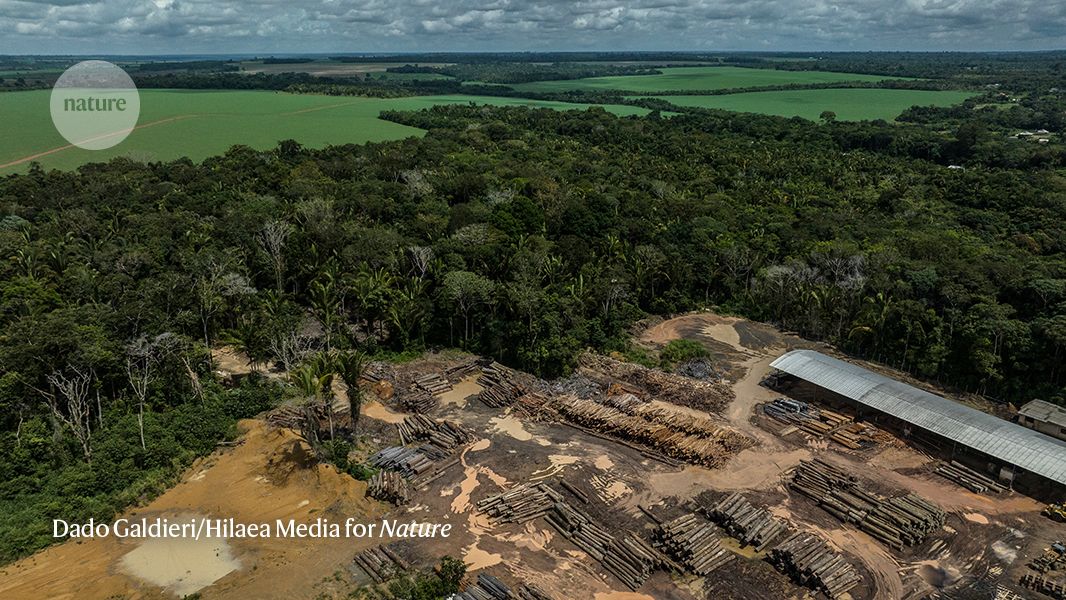What’s more, even intact forest with no obvious local human impacts is accumulating less carbon than it used to, as seen in some tree-census studies. A 2015 analysis6 of 321 plots of Amazon primary forest with no overt human impacts reported “a long-term decreasing trend of carbon accumulation”. A similar study7 published in 2020 reported the same things in the Congo Basin forest — the world’s second-largest tropical jungle.
That’s a change from previous decades, when censuses indicated that such primary forest in the Amazon was storing more carbon. There is no consensus explanation for these slowdowns, or why primary forest was accumulating carbon. But many researchers suspect that the carbon gains in previous decades stem from the influence of extra CO2 in the atmosphere, which can stimulate the growth of plants. In some studies that expose large forest plots to elevated CO2, known as free-air carbon enrichment (FACE) experiments, researchers have measured gains in biomass. But this effect lasted only a few years in one experiment8, and other studies have not yet determined whether the gains are temporary.
All of the forest FACE experiments have so far been conducted in temperate regions, however. And many scientists suspect that tropical forests — and the Amazon, in particular — might follow different rules. The first tropical-forest FACE experiment is finally under construction, 50 kilometres north of Manaus. Nobre says that it could help to predict whether continued increases in CO2 will benefit the Amazon.
For several decades, Nobre and his students have used computer models to forecast how climate change and deforestation will affect the Amazon. The research grew, in part, from work in the 1970s showing that the Amazon forest itself helps to create the conditions that nourish it9. Moisture blowing in from the Atlantic falls as rain in the eastern Amazon and is then transpired and blown farther west. It recycles several times before reaching the Andes. A smaller or seriously degraded forest would recycle less water, and eventually might not be able to support the lush, humid forest.
In their 2016 study2, Nobre and several colleagues estimated the Amazon would reach a tipping point if the planet warms by more than 2.5 °C above pre-industrial temperatures and if 20–25% of the Amazon is deforested. The planet is on track to reach 2.5 °C of warming by 2100, according to a report released by the United Nations last October.
Nobre now wonders whether his earlier study was too conservative. “What Luciana Gatti’s paper shows is that this whole area in the southern Amazon is becoming a carbon source.” He is convinced that, although the Amazon is not at the tipping point yet, it might be soon.
Susan Trumbore, director of the Max Planck Institute of Biogeochemistry in Jena, Germany, is not a fan of using the term tipping point, a phrase with no precise definition, to discuss the Amazon. But she says that the forest’s future is in question. “We all think of a tipping point as it’s going to happen and it’s going to happen fast. I have a feeling that it’s going to be a gradual alteration of the ecosystem that we know is coming with climate change,” she says. Regardless of whether the change will be fast or slow, Trumbore agrees with the majority of scientists who study the Amazon that it is facing serious challenges that might have global ramifications.






More News
Hacking the immune system could slow ageing — here’s how
How artificial intelligence is helping Ghana plan for a renewable energy future
Editorial Expression of Concern: Leptin stimulates fatty-acid oxidation by activating AMP-activated protein kinase – Nature